Seismic Soil-Structure Interaction, Geotechnical Engineering

Seismic Soil-Structure Interaction
Earthquake-induced liquefaction
Earthquakes (including tsunamis) have a higher human life toll than all other types of natural disasters combined, claiming nearly 750,000 lives between 1994 and 2013. Earthquake-induced economic losses in the same period reached $787 billion.
One of the most significant earthquake-related hazards is liquefaction, a phenomenon during which water-saturated deposits of granular media like sands lose their shear strength and start behaving like a heavy liquid. Liquefaction has severe consequences for a range of infrastructure. Some examples are highlighted below:
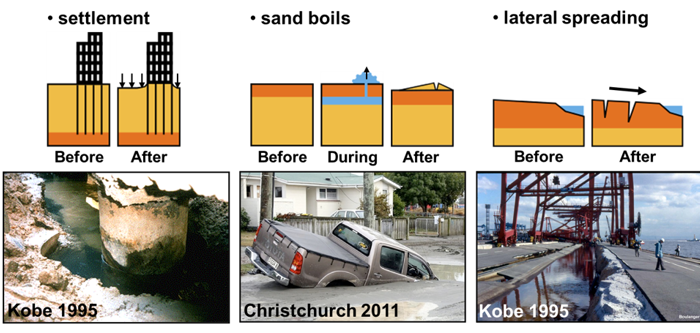
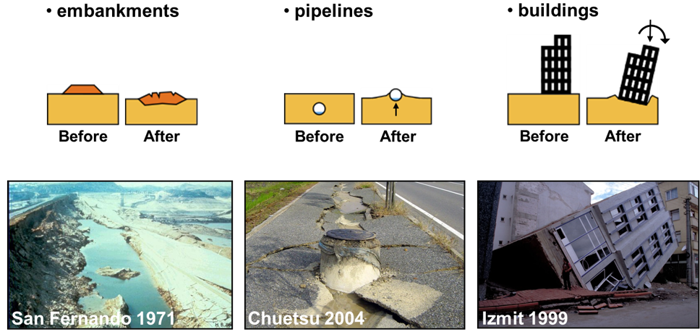
Buildings with shallow foundations
Our research focuses on buildings with shallow foundations, which make up the bulk of the building stock, and their response during earthquake-induced liquefaction events. The problem has been investigated using both dynamic centrifuge testing and advanced numerical modelling.
Centrifuge modelling
Centrifuge modelling was used to depict the developed deformation mechanisms that contribute to settlement and rotation and identify the shortcomings of empirical methodologies for the estimation of settlement. An example of the experimental results obtained through centrifuge testing is given below, depicting the velocity fields developed in a liquefiable layer, along with excess pore water pressure contours.
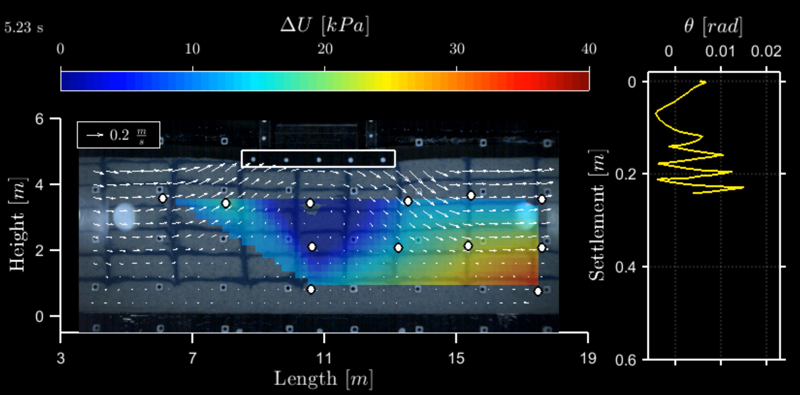
More information can be found in:
Numerical modelling
Centrifuge modelling is invaluable in highlighting mechanisms but it is very demanding in resources and time. Numerical modelling allows us to investigate a large number of parameters more efficiently. Nevertheless, reliable numerical modelling of liquefaction is by no means a trivial problem, requiring coupled hydromechanical analyses using advanced constitutive models, which have to be carefully calibrated. Due to the uncertainties related to modelling of liquefaction, an in-depth validation of the numerical simulations is also required, by comparing predictions to results from centrifuge testing. After validation, simulations can be used to explore the effect of different parameters. An example of a comparison between centrifuge experiments and numerical simulations is given below.
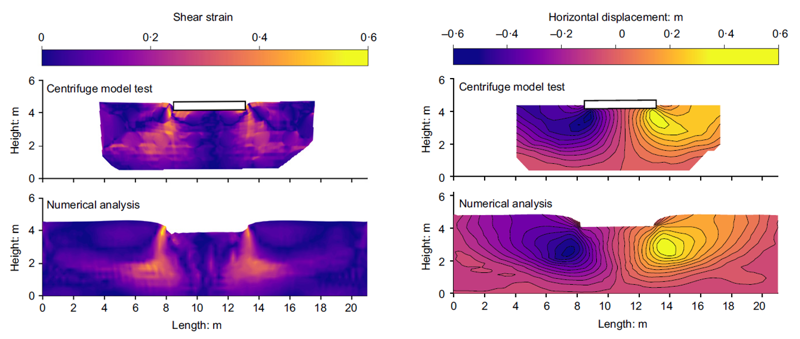
More information can be found in:
Simplified predictions
Practicing engineers will typically not have the time and resources required to run the sophisticated experimental and numerical campaigns required for an in-depth analysis of a liquefaction-related problem. Instead, they use simplified procedures to estimate how a structure might respond. An example for a simplified, iterative equivalent-linear process for the estimation of maximum rotation of a structure on a shallow mat foundation during a liquefaction event is given below:
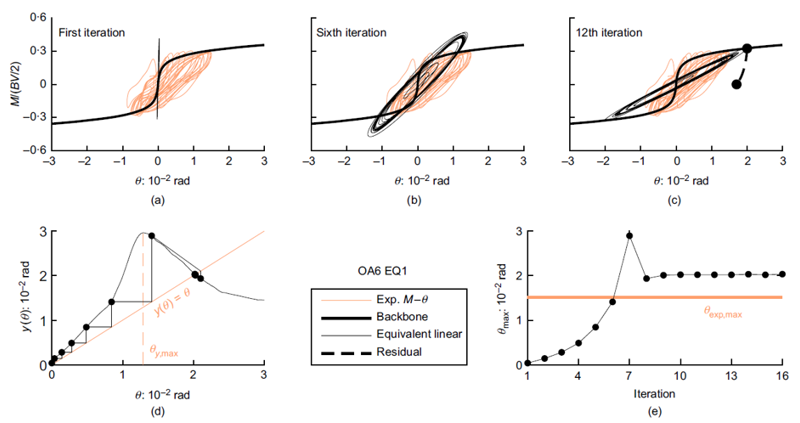
More information can be found in:
Future research
Research in this area is ongoing. For latest publications and research opportunities please contact Prof. Orestis Adamidis.
